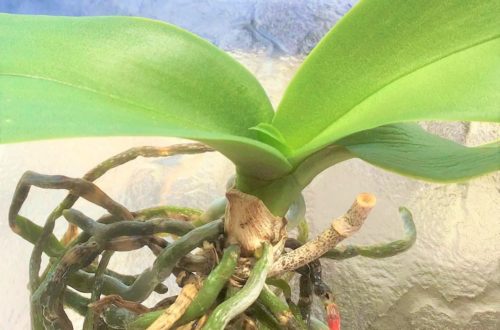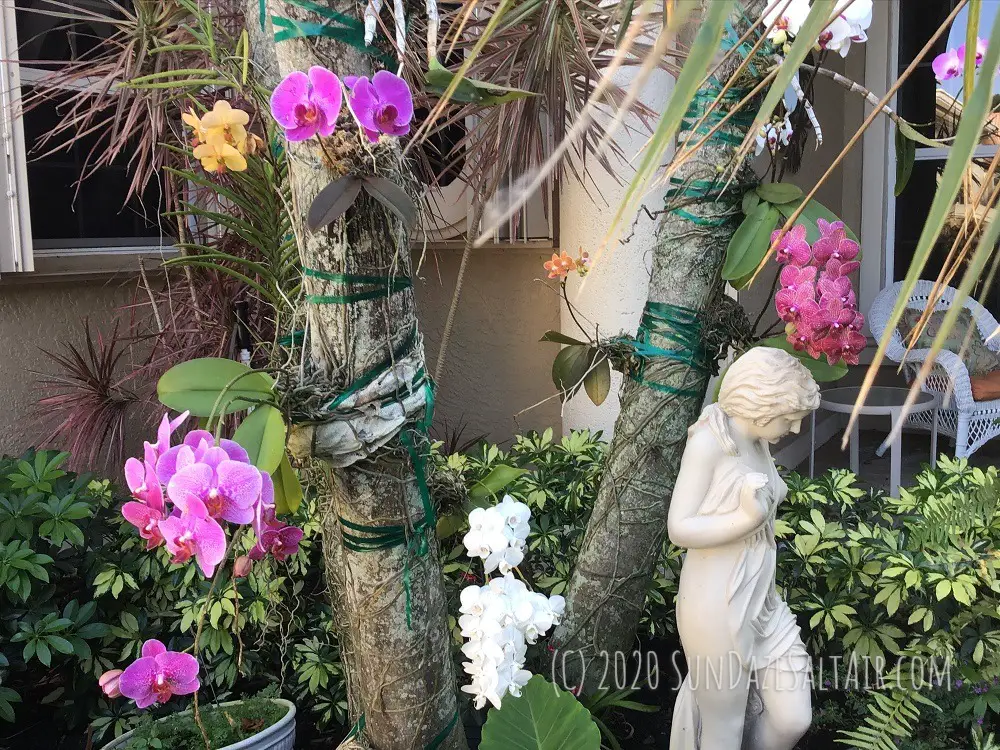
Why Are The Leaves Of My Vanda Orchid Turning Yellow? Five Causes & How To Save A Dying Vanda
Vanda Orchid Rescue: Why Your Vanda’s Leaves Are Yellow & What to Do About It
Every Vanda grower at some point is faced with the question, “Why are the leaves of my Vanda orchid turning yellow?” Caring for Vanda orchids can sometimes feel like a gardener’s version of “Goldilocks and the Three Bears.” Trying to avoid “too much” or “too little” in the quest to arrive at what is “just right” for this temperamental, yet beautiful plant. Seemingly overnight leaves on your Vanda orchid can turn a dreaded shade of yellow. As cultivators of this finicky plant, this can feel like a failure. Fear not, my orchid loving friends… In the quest to share knowledge in the ever-growing orchid community, I am continuing a series that answers specific questions related to cultivating orchids. While I have a more comprehensive article devoted to cultivating Vandas, today I discuss why your orchid leaves are yellowing and what you can do about it.

Yellowing Vanda Leaves – What Could Cause The Leaves Of My Vanda Orchid To Turn Yellow?
Possible Cause # 1: Age, If The Lowest Leaves Of Your Vanda Are Yellowing
As I have discussed in other posts, Vandas, like the Phalaenopsis, are monopodial orchids, which is a fancy way of saying that they get taller from a single stem as they grow. With each new leaf and flower spike, sprouting from the main stem, Vandas, like Phaels, grow vertically, reaching new heights. As a result, the lowest leaves of your Vanda are your plant’s oldest leaves; often a few years old by the time they reach the bottom. As with many plants, old leaves are prone to periodically shed, and prior to shedding they will typically turn yellow as energy is redirected towards new growth on top. Such is the case with Vandas.
Unlike deciduous orchids, such as Dendrobiums, which shed their leaves every year, healthy Vandas should not shed more than one to two leaves annually, or perhaps three for a larger size Vanda.
In conclusion, don’t be surprised or alarmed if you see the lowest leaves of your Vanda start to yellow. It is simply nature’s way of redirecting the plant’s energy toward fresh growth on top and away from old and underperforming growth below.
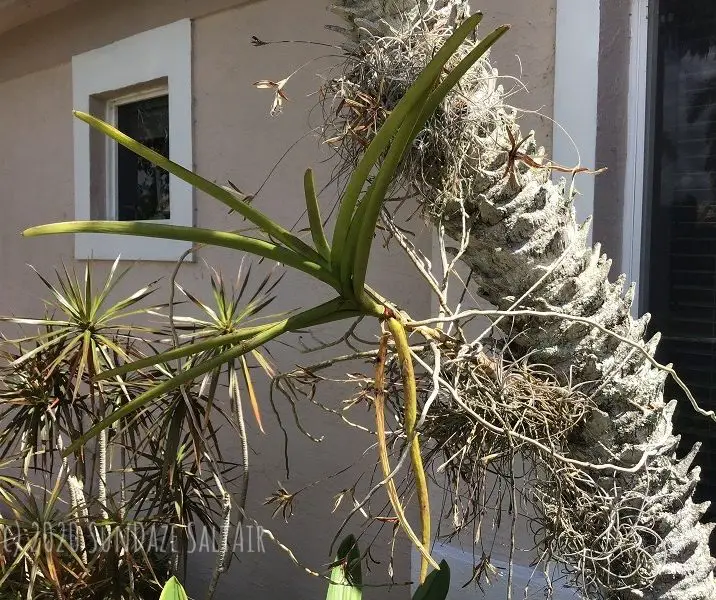
How Many Leaves Should A Vanda Orchid Lose Each Year?
As stated above, due to this natural process, you should not be alarmed if you see the lowest leaves of your Vanda begin to yellow as they prepare to shed each year. Particularly with older Vandas, such “aging out” of the lowest, underperforming leaves is a normal occurrence in an otherwise healthy plant. The plant will not squander nourishment and energy by maintaining older, and often, damaged, leaves. However, if they do not shed naturally but stubbornly continue to hang on, you may want to help them out — especially if they are damaged or showing signs of rot. Read on for tips on how to help remove dying leaves safely.
********
What If The Middle Or Top Leaves Of My Vanda Orchid Are Yellow?
Possible Cause # 1: Disease From Crown Rot / Too Much Water If The Middle Or Top Leaves Are Yellowing
While yellowing leaves at the bottom of a Vanda are normal, yellowing leaves toward the middle or top of a Vanda can be a sign something is wrong. The first possibility is crown rot. Crown rot typically occurs when excess water gets trapped in the crown, also known as the area where an orchid’s leaves meet its stem. If water is allowed to pool in this location, it will effectively begin to rot your Vanda and its leaves, and can eventually lead to black stem rot.
While Vanda orchids can handle dampness a bit more than most other orchids, especially since they like abundant sunlight, they do still prefer to dry out in between watering.
Solution:
You can avoid such a scenario by ensuring your Vanda always drains properly without obstruction. Be sure to periodically check that excess water isn’t allowed to remain trapped in crown crevices or on leaves. You should keep a towel or cloth handy and gently wipe away any standing or trapped water that you see. Also, avoid watering your Vanda at night and be sure your Vanda gets adequate sunlight exposure so rot doesn’t stand a chance. Following these simple rules will ensure your Vanda is never exposed to conditions that encourage rotting. If your plant is able to dry out and recover its optimal health, any yellow leaves may revert to green.
Should You Remove Yellow & Damaged Vanda Leaves?
While I would never encourage removing any healthy leaves, allowing unhealthy, damaged ones to remain not only saps energy from your Vanda, but could breed bacteria. Any permanently damaged yellow leaves should shed on their own. However, sometimes, especially if damaged, leaves may only partly shed, with a portion remaining on the plant. If this occurs, you should help them along by gently tugging on the leaves and see if they easily fall away. I’ve often witnessed an orchid suddenly perk up with renewed vitality following this type of pruning. You can also use clean scissors that are sterilized with a bit of hydrogen peroxide.
To prevent bacterial transfer, you can apply hydrogen peroxide to the crown where the leaf was removed, as well as dried cinnamon to the same spot on the crown. This will limit the chances of bacteria and prevent any possible fungal infection from spreading.
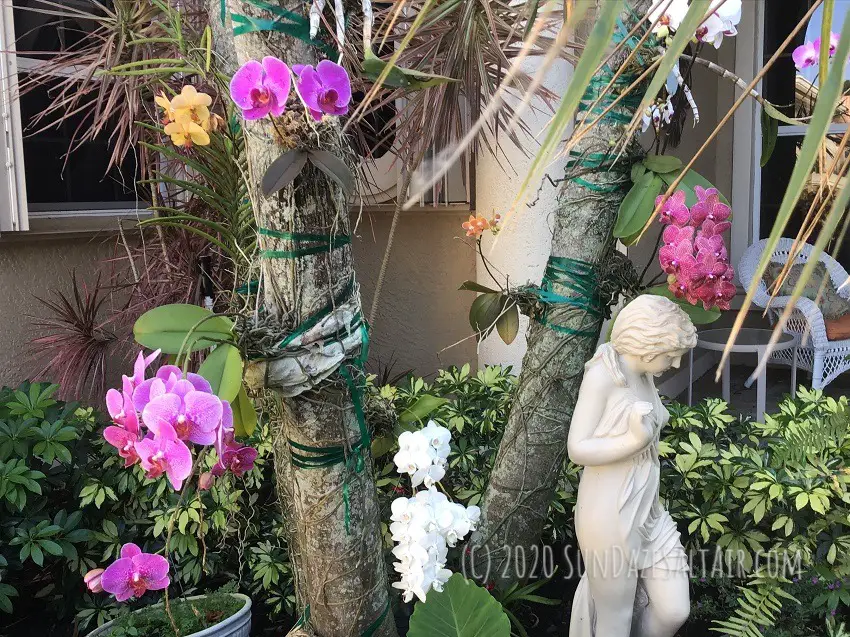
***TIP: Start your own orchid garden with this beautiful assortment of orchids, including a Vanda:
***This is an affiliate link, so if you choose to purchase through this link, I will earn a small commission:
Start your own beautiful Orchid Zen garden with this assortment of five young orchid plants. This collection would be a great start to what will likely become a lifetime passion. Colors vary according to what is available in stock.
Possible Cause # 2: Why Are The Leaves Of My Vanda Orchid Turning Yellow? Damage From Cold Temperatures
Since Vanda’s love sunlight and warm temperatures, exposure to cold temperatures may cause yellowing leaves. While there a few Vanda species that are more cold tolerant, in general, orchids do not take well to cold weather owing to their tropical origins.
Solution:
If temperatures drop below 50 to 55 degrees Fahrenheit, be sure to move your orchids inside temporarily.
Possible Cause # 3: Why Are The Leaves Of My Vanda Orchid Turning Yellow? Nutrient Deficiency From Inadequate Water
Due to Vanda orchid’s especially high need for hydration, it is not uncommon for a well-meaning but novice Vanda grower to fail to satisfy Vanda’s high water demands. But, what does this have to do with nutrition you ask? A lot actually. In order for orchids to get adequate nutrients, in the form of chlorophyll, the pigment that gives plants their color, orchids need sufficient water. Without enough water, Vanda’s will not be able to make enough chlorophyll, a nutrient and pigment deficiency which will show up in pale and yellow leaves.
Solution:
Be sure to water your Vanda daily, even twice daily if heat is especially intense. Mist your Vanda’s air roots early in the day thoroughly so they are well-hydrated. Combined with the rays of the sun, your Vanda will be able to kick chlorophyll production into high-gear; and before long, your Vanda will display vibrant green leaves instead of sickly yellow ones.
***TIP: For even quicker results, when you water, you can also feed your Vanda with fertilizer to help replenish vital nutrients, including Nitrogen.
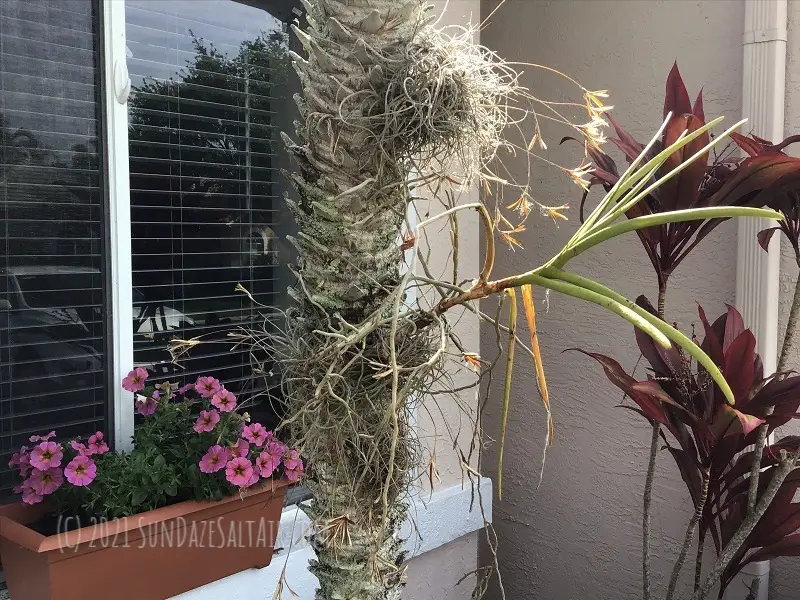
********
What Do Yellow Spots On The Leaves Of My Vanda Orchid Mean?
Possible Cause # 1: Sunburn / Too Much Sun
While Vanda’s generally like a lot of sun, they are fussy about direct sun exposure especially during the hottest time of the day at high noon. If you see yellowish spots, instead of the entire leaf yellowing, your Vanda may be sunburned as a result of getting too much direct sunlight. Yes, sunburns are not always red, at least for Vanda’s. Often, yellow spots will appear isolated on an otherwise green leaf indicating where damage has occurred. Such spots indicate something, usually water droplets, magnified and intensified the sun’s rays, essentially burning and scarring your Vanda’s leaf.
Solution:
Relocate your Vanda immediately to a more sheltered area, perhaps under a tree, so it get’s less concentrated and more filtered sunlight. While the bleached out, damaged spots won’t regain their green color, your plant itself will recover as you will see at the top of your Vanda in the form of new green growth.
Also, if you recently moved your Vanda to a sunnier spot, it may not have had the opportunity to adjust itself to it’s new sunny surroundings. Gradually introduce your Vanda to a new location, where there is some relief or shelter from too much direct sunlight for part of the day. Be cautious to never put your Vanda in the path of direct and harsh sun, and you will start to see new leaves emerge green and healthy.
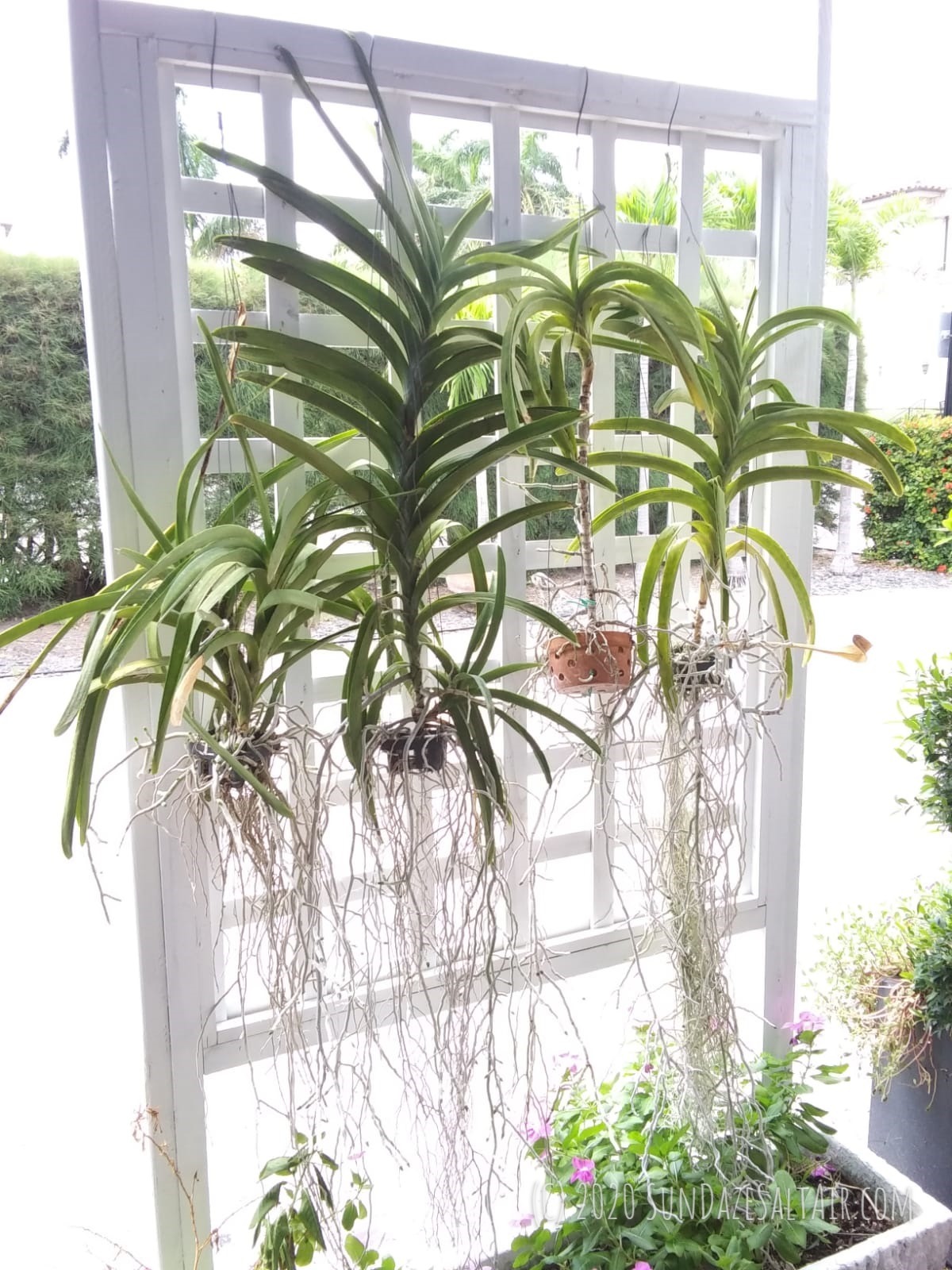
Conclusion: It Is Common For Vanda Orchid Leaves To Yellow But Know The Signs That Threaten Your Vanda
By paying close attention to changes in your Vanda and bookmarking this page for future reference, you should be able to quickly spot and treat any signs of disease, and possibly reverse any yellow leaves to a healthy shade of green. A little vigilance is the best defense to restore your Vanda’s health and overcome anything that threatens your incomparable Vanda.
********
Have you experienced and treated yellowing leaves on your Vanda orchid? Let us know what worked for you in the comments down below.


You May Also Like

How To Grow Potatoes in A Bag Easily in Small Spaces & Turn 3 Potatoes Into 30! Step-By-Step
July 13, 2021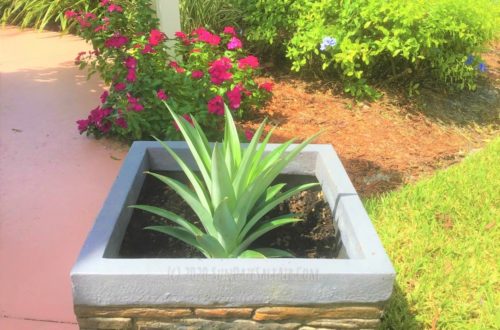
How To Grow A Pineapple From Another Pineapple Top: Easy & Fun! (With Pictures)
August 6, 2021